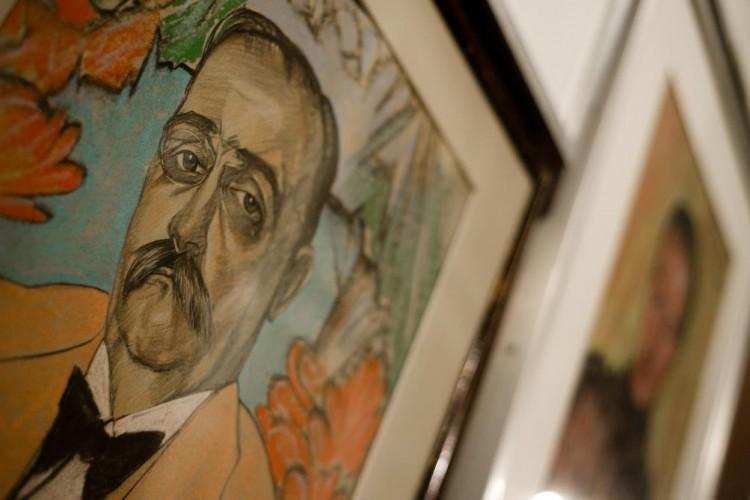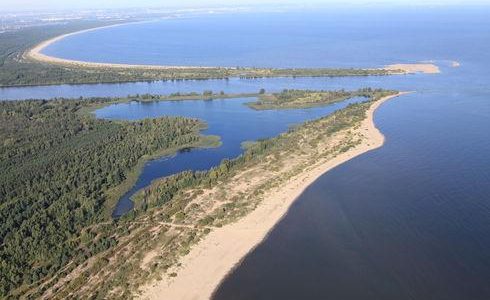The collection of works by Stanislaw Ignacy Witkiewicz, which is located in Slupsk, has over 260 works. These are not only pastel portraits, oil paintings, charcoal and pencil drawings, graphics, but also letters, postcards, original photographic prints, first editions of books and all kinds of archives. We will find these extraordinary treasures of one of the most controversial, but at the same time extremely talented artists of the 20th century in the rooms of the Pomeranian Dukes’ Castle in Slupsk.
Stanisław Ignacy Witkiewicz (Witkacy)
He was born in Warsaw, the son of two artists – a painter (father) and a musician (mother). His godparents were Helena Modrzejewska – the icon of Polish theatre, and Sabała, a Podhale highlander and story-teller. Witkacy grew up to be an incredibly colourful yet controversial figure. Even when he was a child he met the luminaries of Polish culture and art – no wonder then that he chose an interesting yet difficult way to pursue in his own art. He spent all his life looking for the artistic absolute, which he called “pure form”. He sought it with equal enthusiasm in painting and in literature. He was an esteemed painter and a frequently-staged playwright. His extremely colourful personality and eccentric behaviour and views, as well as a certain “vogue for Witkacy”, made him one of the most important personages of pre-war Poland’s artistic and social life.
The pursuit of pure form, although interesting, did not yield profit, which led him to paint commissioned portraits within the framework of the “S. I. Witkiewicz Portrait Company”. Although he did not set much store by this field of his work, it is the portraits of famous and unknown people, sometimes realistic, but just with a hint of metaphysics, and sometimes utterly fantastic, that brought him the most fame and recognition.
Sailing the vast seas of pure form did not shelter Witkacy from the winds of history. He took part in World War I as a soldier and officer, although he never related his wartime adventures. He also witnessed the outbreak of the Russian revolution and the beginning of World War II. For years he had prophesied the invasion of the Asian civilisation on Europe, so when he heard that the Soviet army had enteredPoland in September 1939, he committed suicide.
How come Witkacy’s works ended up in Slupsk?
With probability bordering on certainty, Witkacy was never in Slupsk. The history of the artist’s collection in Pomorskie dates back to 1965. It was then that the Pomorskie Central Museum in Slupsk bought 109 portraits and one composition from one of Lebork citizen. It was Michal Bialynicki-Birula, son of Teodor, who was a doctor in Zakopane and friend of Witkacy. In the 1960s, the purchase of so many pastel works by Witkiewicz was quite a risky step – the Zakopane eccentric was valued for his achievements in the field of theatre and drama, but his artistic works were not popular.
Interestingly, the exhibition in Slupsk is the only permanent monographic exhibition in the world of Witkacy. About 120 works of the artist are presented at the exhibition at once. However, because the museum’s resources of his work are much bigger, they are exchanged, so you can visit the exhibition several times and always discover something new.
With time, Witkacy’s talent began to be noticed and his artistic output was increasingly appreciated. In the 70’s, more works were purchased – 12 drawings and two portraits from the collections of Jan Józef Glogowski, an engineer and photographer associated with Witkacy. Another purchase was 40 works from a dentist who was a friend with the artist. It was him who Witkacy painted portraits in exchange for dental treatment. Therefore, the Pomorskie Central Museum in Slupsk has successively collected over 250 works! Pastel portraits painted on paper dominate here.
Experts of the artist’s work will certainly notice that the works that are presented at the Pomorskie Central Museum in Słupsk are a cross-section of the various stages of the work of the Zakopane artist. Here are examples of works that were created during the time of belonging to the Formists or from the period of intense portrait activity and fascination with human physiognomy.
















